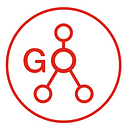Using and acting on evidence about disaster risk has become a core component of IFRC’s way of working. Indeed, the first goal of IFRC’s 2030 Strategy is to help people anticipate, respond to and quickly recover from crises.
In order to anticipate a crisis the world’s 192 National Red Cross and Red Crescent Societies need information that tells them when and where hazards are likely to occur, what their impacts will be and what kind of assistance people in crisis will need.
In order to generate this information and make it available on the GO platform, we rely on different kinds of models that calculate the impacts of natural hazards based on what people and assets are exposed and how vulnerable they are. Having a model does not, however, automatically transform an early warning into effective early actions. We need to have confidence that the model is accurate and we also need to know what interventions are the most effective in different contexts. And for this we need observational data about the past hazard events and their impacts..
Specifically, we need information about
- the timing, location and intensity of past hazards — to know how often they will occur,
- their impacts — to understand humanitarian needs associated with different kinds of events, and
- responses to past and ongoing events — to identify which measures are the most effective, and why, and to learn from past crises.
As we set out to design and build tools to accelerate anticipatory actions and make them available on GO as part of our current work plan, we realised that we needed a lot more of the data described above. Luckily, several partners were thinking along the same lines as we were, and we decided that we can gain a lot more and make progress much more quickly if we worked together. That’s why we launched our initiative at the annual Humanitarian Network and Partnership Weeks along partners with whom we plan to collaborate. (Ed: A recording of the event is available here.)
At our event, the World Meteorological Organization and the World Bank’s Global Facility for Disaster Reduction and Recovery explained how they are developing data standards and catalogs to collect data from national authorities, and harmonise it so that they can share information about hazards and risks — at a global scale. OCHA’s Humanitarian Data Exchange and the DEEP are large repositories of validated data on the impacts of past hazards on exposed communities, and they presented how their information could contribute to recording the impacts of past and ongoing events. And OCHA’s Centre for Humanitarian Data, the Pacific Disaster Center explained how they use this kind of curated observational data to build models that transform data on forecasted hazards into estimates of impacts and humanitarian needs. Meanwhile UNDRR, UNDP and the Centre for Research on the Epidemiology of Disasters explained how this data, once collected, could support other use cases, like tracking progress anticipating and addressing future risks.
We realised that by bringing all of this information into one place, and then exploring what we did in response to past crises, there was a tremendous potential to help National Societies learn from their past — and from one another. Many National Societies, from Indonesia to Italy to the U.S., have already developed sophisticated databases that allow them to assess risks within their country and identify where, when and how to intervene. Now it’s time to champion them, build on their good work by helping National Societies in other countries develop the same capacities through the digital maturation process.
